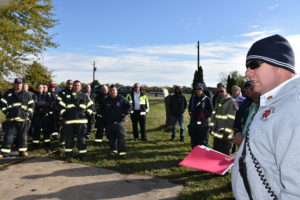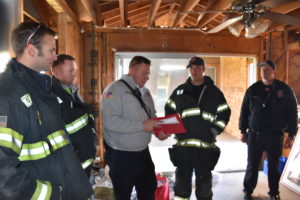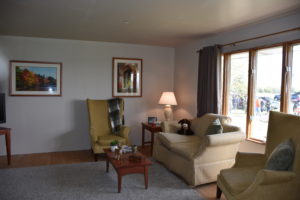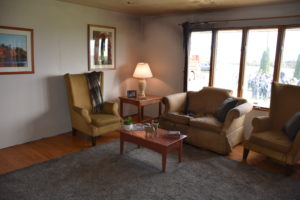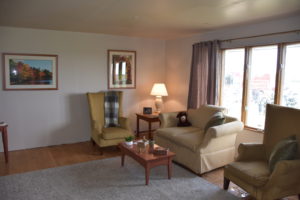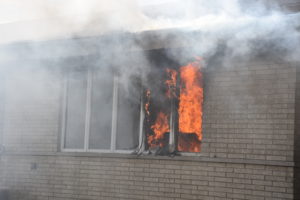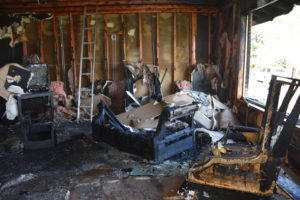The Home Fire Sprinkler Coalition conducted a video shoot to show the difference between a living room fire with and without sprinklers. Working with Chief Joe Falaschetti and the Beecher (IL) Fire Department, a home slated for demolition was identified. Two sets of furniture, carpet, drapes and home decorations were used. Tom Lia, Executive Director of the Northern Illinois Fire Sprinkler Advisory Board worked with HFSC to determine the room set up, oversee the installation of the home fire sprinkler according to NFPA 13D and assist with the two fires.
Chief Falaschetti followed NFPA 1403 and conducted safety meetings and tours of the home with the fire crew prior to the burn. He also worked closely with the camera crew to make sure all involved with the shoot understood the safety procedures. The crew used five cameras to capture the footage from different angles, views, wide and close up shots.
First, the fire with the sprinkler was set. In less than 30 seconds the smoke alarm activated. The fire spread up the curtain and couch. In less than two minutes the sprinkler activated and controlled the fire. Shortly after the sprinkler activated, firefighters entered the room using some water to extinguish fire in the couch.
Less than two hours after the successful activation, the water was cleaned up, the walls and ceiling were painted and the furniture and carpet were replaced. At approximately three minutes after the fire was started, flashover occurred. According to thermal sensors located near the ceililng, temperatures reached 1150 degrees.
The video footage will be used for educational videos and it will be available to media outlets for fire safety stories.

